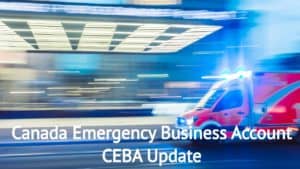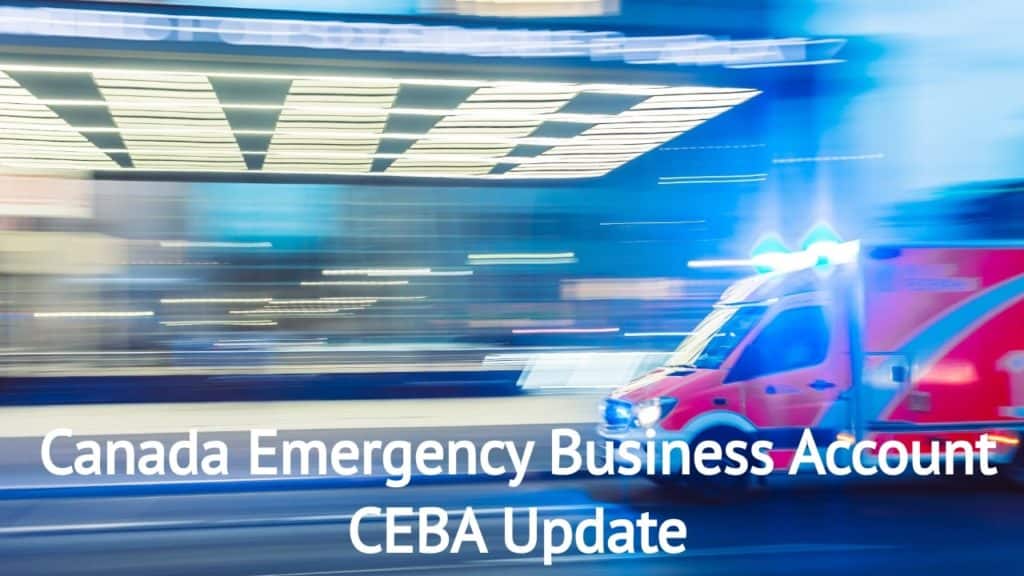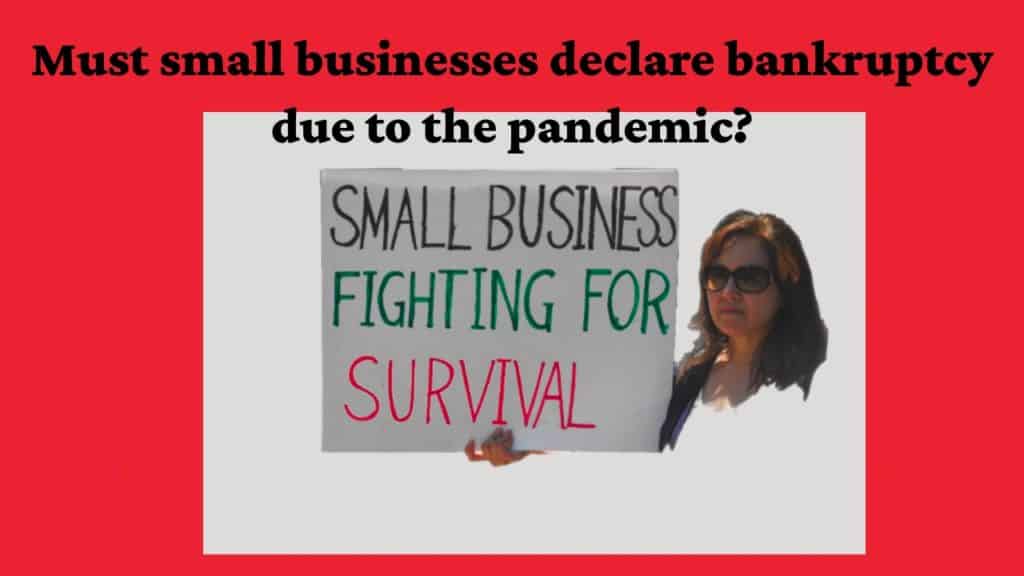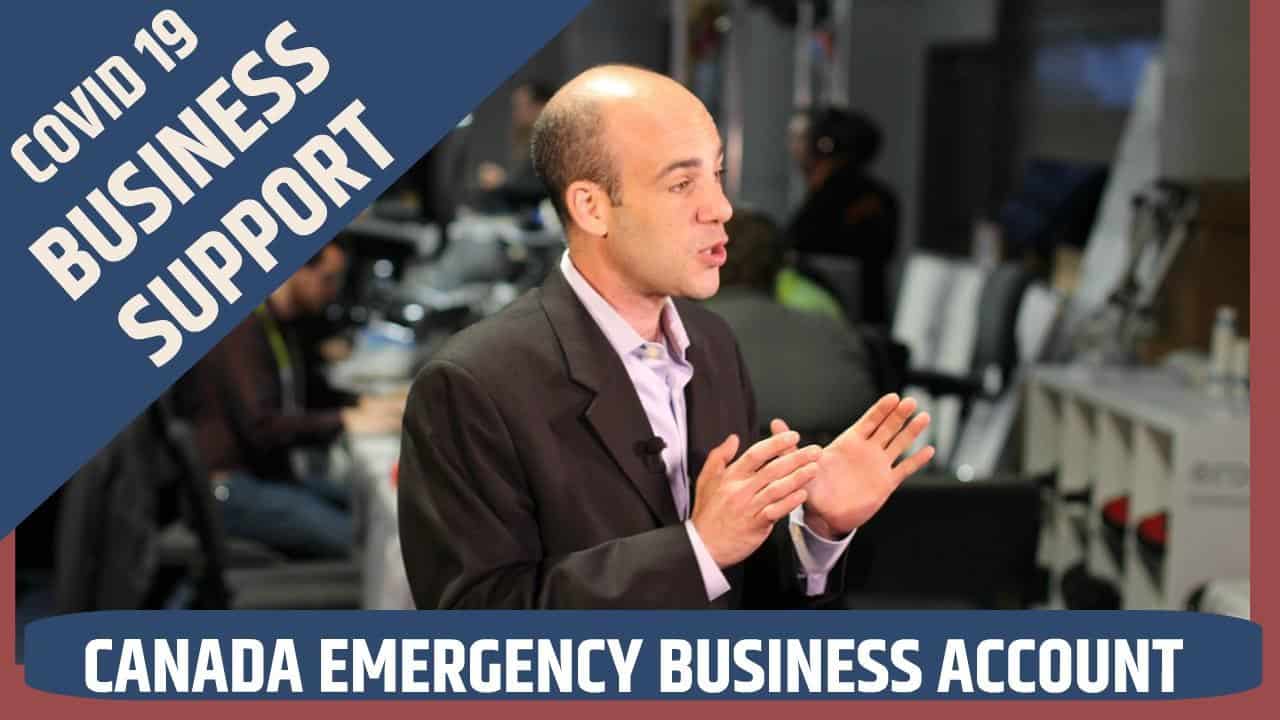We hope that you and your family are safe, healthy and secure during this COVID-19 pandemic. Ira Smith Trustee & Receiver Inc. is absolutely operational and Ira, in addition to Brandon Smith, is readily available for a telephone consultation or video meeting.
ceba update
Canada Emergency Business Account (CEBA)
The CEBA is a unique program established by the federal government to help Canadian businesses adversely impacted by the lockdowns and other business interruptions produced by the COVID-19 pandemic. The program was originally developed to help companies and non-profits that need additional funding and some business relief. Absent this Canada Emergency Business Account program, the funding that might be available from financial institutions would not address the Canadian business realities of then or unfortunately, still now.
In my April 13, 2020, Brandon Blog “COVID-19 BUSINESS SUPPORT: CANADA EMERGENCY BUSINESS ACCOUNT REVIEW“, I described the CEBA program. Since then there has been a CEBA update or two. As most of us understand, the economic situation is still refraining from doing much better. I am currently being contacted by companies who got CEBA funds yet still are insolvent and feel they will either need financial restructuring or bankruptcy. The CEBA funds were valuable yet were insufficient now that we are in the 14th month of this health and wellness pandemic.
In this CEBA update Brandon Blog, I want to go over the most up-to-date upgrade on CEBA and answer several of the more typical inquiries I am now being asked when business owners consider an insolvency filing for their company.
The easiest way to answer what the CEBA update is will be to start fresh and describe what the program was back when first announced and what it is today after the CEBA changes.
CEBA update: Original CEBA eligibility requirements
The original CEBA loan requirements went like this. The CEBA online application process showed up on April 9, 2020. PM Trudeau introduced this brand-new program as part of the federal government’s general program to supply COVID-19 business operations assistance to Canadian companies. At that time, the program saw financial institutions providing $40,000 in financing to each qualifying company, guaranteed by the federal government.
The loans were processed and financed by the Canadian chartered banks. Despite its name, the Canada Emergency Business Account is actually not a business account. It is a non-revolving term loan. It is government-guaranteed lending of $40,000, The CEBA are interest-free loans that are not due for repayment until December 31, 2022. If not repaid by then, interest will then accrue.
The CEBA was developed by the Canadian government to supply COVID-19 business operations assistance to small and medium companies and also non-profit organizations with their most immediate cash requirements during the COVID-19 dilemma. The process was all online. The online application process included a CEBA pre-screen tool. The applicant went through the questions and submitted the required information. The system then:
- provided a CEBA pre-screen tool reference number;
- told you that the application was submitted through your bank;
- said your bank really has nothing to do with the application process; and
- confirmed that you will get an answer within 7 to 10 business days.
The requirements for approval for the $40K CEBA were not difficult to meet. The CEBA was readily available to incorporated companies and non-profits who relied upon their respective CRA Business Numbers and had an operational Canada Revenue Agency Business Number (BN) on or before March 1, 2020. The company or non-profit also needed to be businesses with payroll and have a total 2019 payroll filed under the Canada Revenue Agency Business Payroll Number (BN), between $50,000 and $1 million.

CEBA update: Is my business eligible for CEBA and its expansion?
The program requirements have since been amended since the original CEBA came out. The maximum loan balance, other program details and eligibility criteria have changed. To qualify as one of the eligible businesses for a $60,000 CEBA the applicant needs to be an operating company that is a proprietorship, partnership or a Canadian-controlled private corporation that was in operation in Canada on March 1, 2020.
Other types of entities are not qualified for the $60,000 CEBA or $20,000 Canada Emergency Business Account expansion financing. If you previously were approved for the original $40,000 CEBA, you know that you can qualify now for the $20,000 CEBA expansion from the initial $40K amount already funded. So now sole proprietors operating a sole proprietorship and partners in business partnerships also qualify. Family-owned corporations always did and continue to qualify. It seems that the non-profit enterprises do not for the CEBA update program.
The CEBA update application process now adheres to 1 of 2 streams: (i) the Payroll Stream (To be considered as eligible businesses, applicants that are businesses with payroll paid under the Canada Revenue Agency Business Payroll Number (BN), in the 2019 fiscal year between a lower limit of $20,000 to a maximum limit of $1,500,000) or (ii) the Non-Deferrable Expense Stream (Applicants who are businesses with payroll paid under the Canada Revenue Agency Business Payroll Number (BN), of $20,000 or less in the 2019 calendar year).
The actual wording in the program requirements is expressed in a funny way. It talks about having paid employment income, rather than a payroll expense as I have described it above. I guess Parliament wanted to emphasize the fact that the money should be used to including employing Canadians so that they will earn the employment income being paid by the business payroll!
Every applicant needs to meet the following eligibility criteria:
- CRA Business Numbers – has an active business account with a CRA Business Number (BN) registered on or before March 1, 2020.
- Has an open business chequing/operating account with the proposed lending institution they are applying through at the time the application process is put into play. Examples would be a CIBC Business Operating Account, an RBC Business Deposit Account, or a similar account at any of the other Canadian chartered banks. If you have a Canadian operating business, it should not be too hard to meet this qualification of having an active business chequing account.
- Those making an application for the complete $60,000 CEBA, have not previously utilized the Canada Emergency Business Account Program and also will not request support under the CEBA Program at any other financial institution.
- Plans to stay open or to go back to opening up as soon as restrictions are lifted.
CEBA update: Non-deferrable expense stream eligibility
If you are applying under the Non-Deferrable expenditures stream, you have to, in addition, comply with some extra eligibility criteria as follows:
- Having verifiable non-deferrable expenses between $40,000 and $1,500,000. Eligible non-deferrable expenses can consist of operating costs like property rental fees, real estate tax, insurance policy protection, and utilities. The government says that expenditures for such non-deferrable operating expenses will certainly undergo confirmation and audit, presumably by Canada Revenue Agency.
- Submitted an income tax return with the CRA with a tax year ending in 2019 or, if its tax return for fiscal 2019 is not yet due for filing, 2018.
As always, as soon as you have actually finished the online application via your bank, the Government of Canada will examine the application as well as alert you and your bank of the approval or decline of the funding. Your financial institution will put the funds right into your business chequing/ operating account if you are successful.
So this is how the CEBA expansion has changed the eligibility requirements resulting from the CEBA update. It is obvious that the government wants to help businesses have the necessary cash on favourable terms to make necessary expenses for business purposes.
The CEBA update has also extended the CEBA Application Period. The CEBA update also has now extended the to receive applications from businesses to June 30, 2021, (proposed in the recent Budget to be extended to the Fall of 2021) to request a $60,000 CEBA or the $20,000 expansion at their financial institution. Unless the government announces an extension to this date, time is running out.

CEBA update: How many businesses have applied for CEBA?
Here are the statistics of the use of the CEBA program during this difficult time as of this date:
- 866,750 businesses were approved for CEBA loans;
- 532,899 businesses were approved for the CEBA update expansion; and
- funds were loaned as a result of the above total $46.56 billion.
What are the CEBA loan terms and is there any CEBA event of default?
The most well-known CEBA term loan provisions are:
- The CEBA program supplies access to a $60,000 business loan.
- 0% interest till December 31, 2022.
- No principal payments until after December 31, 2022.
- The loan is fully open so, all or part of the non-forgiven portion can be repaid prior to January 1, 2023.
- Full repayment by December 31, 2022, will only require the borrower to repay $40,000 of the total $60,000 loan for it to be considered fully repaid. Therefore, there is loan forgiveness of $20,000 if repaid by the end of 2022. The federal government is actually calling this loan forgiveness for early repayment.
- The interest rate on any outstanding balance after December 31, 2022, is 5% per annum during the “Extended Term”. The Extended Term runs until December 31, 2025. So after the interest-free period, the Extended Term converts it to a 3-year term loan after December 31, 2022, the Initial Term Date. During the Extended Term, monthly interest payments are required. The full principal balance of $60,000 is due no later than December 31, 2025.
There are some CEBA update loan events of default as follows:
The events of default are quite simple. The bank may need you to pay back the loan, upon the incident of any kind of among the following events of default:
- you fail in paying any amount due under the CEBA funding;
- you don’t pay according to its terms any other non-CEBA financing outstanding to that same financial institution;
- you fail to comply with any one of the terms of the CEBA agreement (which really revolves around interest and repayment), you make any false or deceptive statements to the bank, including without restriction, in your CEBA application;
- the business commits an act of bankruptcy or becomes insolvent; or
- the business is placed in receivership.
It would appear that the only remedy for the bank upon the default of the borrower is to advise that full repayment is due immediately. There are no other specifics in the CEBA loan agreement providing the lender with any other powers.
There is no personal guarantee attached to this CEBA loan. However, there is some language that speaks to the CEBA agreement being binding on “your heirs, your successors and personal representatives – including executors and administrators”. This language did not make any sense when only corporations could apply in the beginning. The language now makes sense because the CEBA update created the CEBA expansion to include sole proprietors and partners, who of course, are people, not companies.
I have received some calls from entrepreneurs who applied for and obtained the CEBA $60K loan expansion funds. Their company is still in financial trouble; it was just able to hang on longer. The business owners want to know if their company has to enter into an insolvency proceeding, what is their risk as it relates to the CEBA repayment?
To date, I have advised them of my understanding of the CEBA loan terms and CEBA loan events of default as outlined above. I also caution entrepreneurs that the company books and records should be able to show both the receipt of the CEBA interest-free loan and that the funds were used for appropriate business purposes.

CEBA update summary
I hope you enjoyed this CEBA update Brandon Blog post on the current rules for the Canada Emergency Business Account. This is one of several government programs to hopefully allow business continuity to survive.
Are you worried because you or your business are dealing with substantial debt challenges and you assume bankruptcy is your only option? Call me. It is not your fault that you remain in this way. You have actually been only shown the old ways to try to deal with financial issues. These old ways do not work anymore.
The Ira Smith Team utilizes new modern-day ways to get you out of your debt difficulties while avoiding bankruptcy. We can get you the relief you need and so deserve.
The tension put upon you is big. We know your discomfort factors. We will check out your entire situation and design a new approach that is as unique as you and your problems; financial and emotional. We will take the weight off of your shoulders and blow away the dark cloud hanging over you. We will design a debt settlement strategy for you. We know that we can help you now.
We understand that people and businesses facing financial issues need a realistic lifeline. There is no “one solution fits all” method with the Ira Smith Team. Not everyone has to file bankruptcy in Canada. The majority of our clients never do. We help many people and companies stay clear of bankruptcy.
That is why we can establish a new restructuring procedure for paying down debt that will be built just for you. It will be as one-of-a-kind as the economic issues and discomfort you are encountering. If any one of these seems familiar to you and you are serious about getting the solution you need, contact the Ira Smith Trustee & Receiver Inc. group today.
Call us now for a no-cost consultation.
We will get you or your business back up driving to healthy and balanced trouble-free operations and get rid of the discomfort factors in your life, Starting Over, Starting Now.
We hope that you and your family are safe, healthy and secure during this COVID-19 pandemic. Ira Smith Trustee & Receiver Inc. is absolutely operational and Ira, in addition to Brandon Smith, is readily available for a telephone consultation or video meeting.







